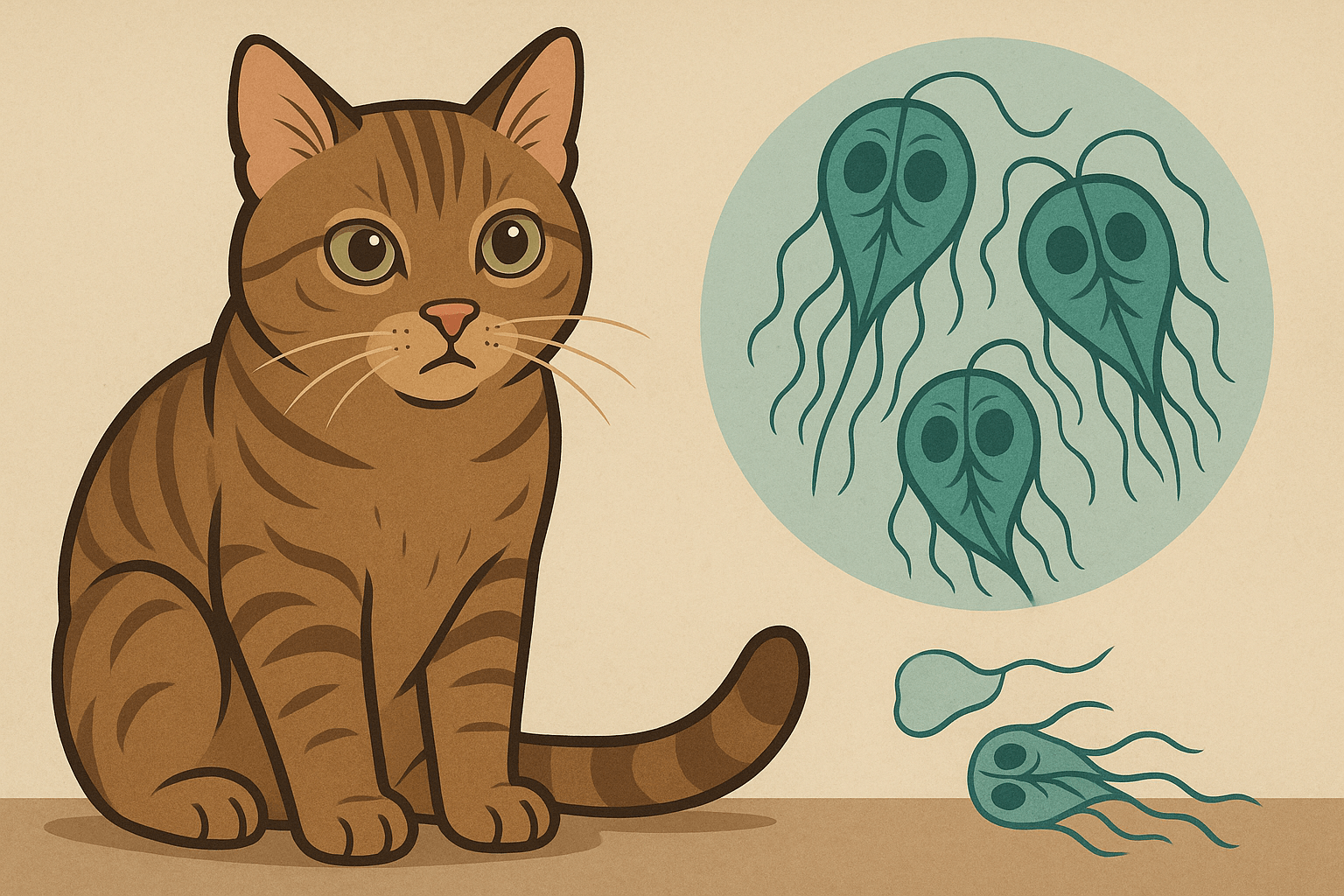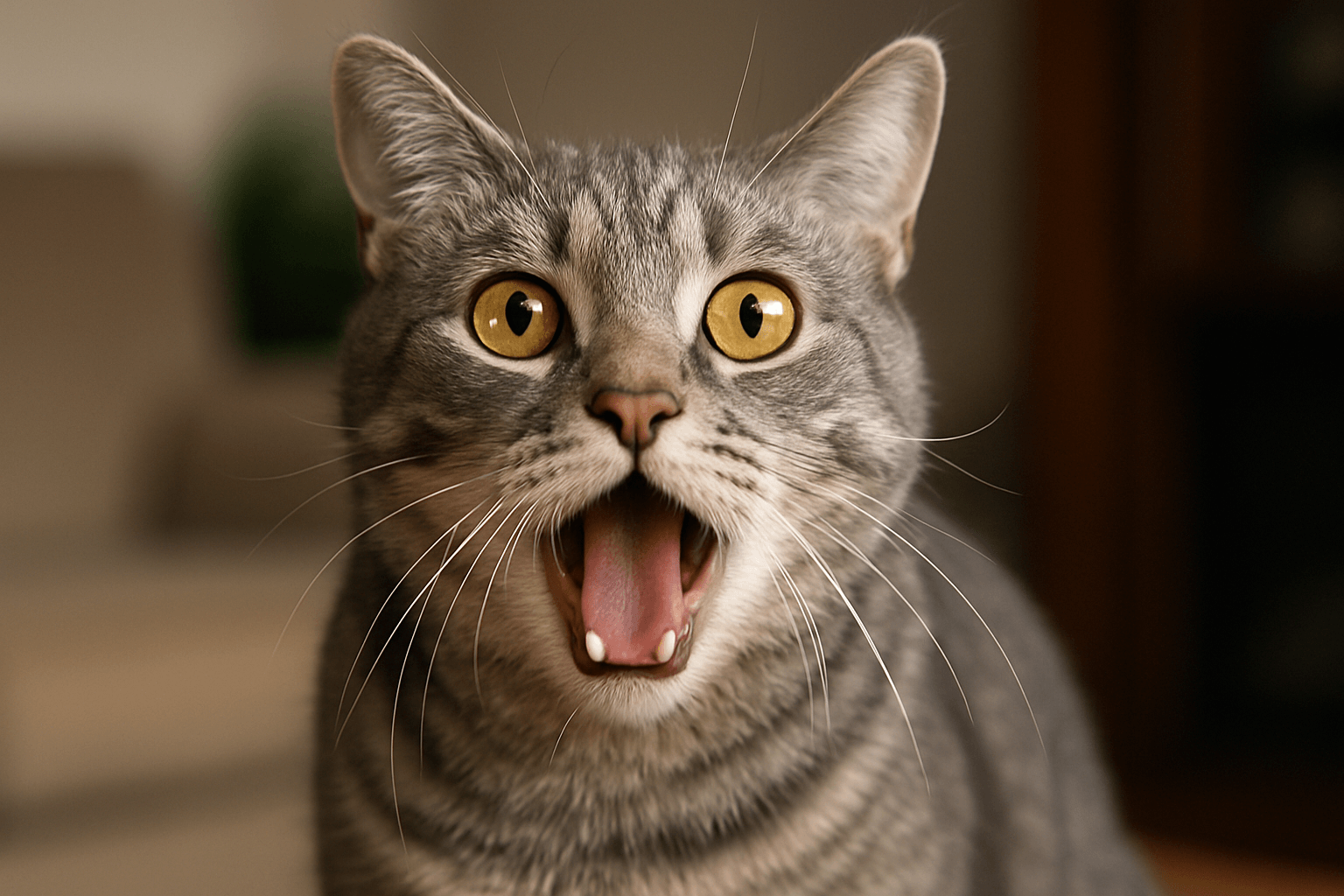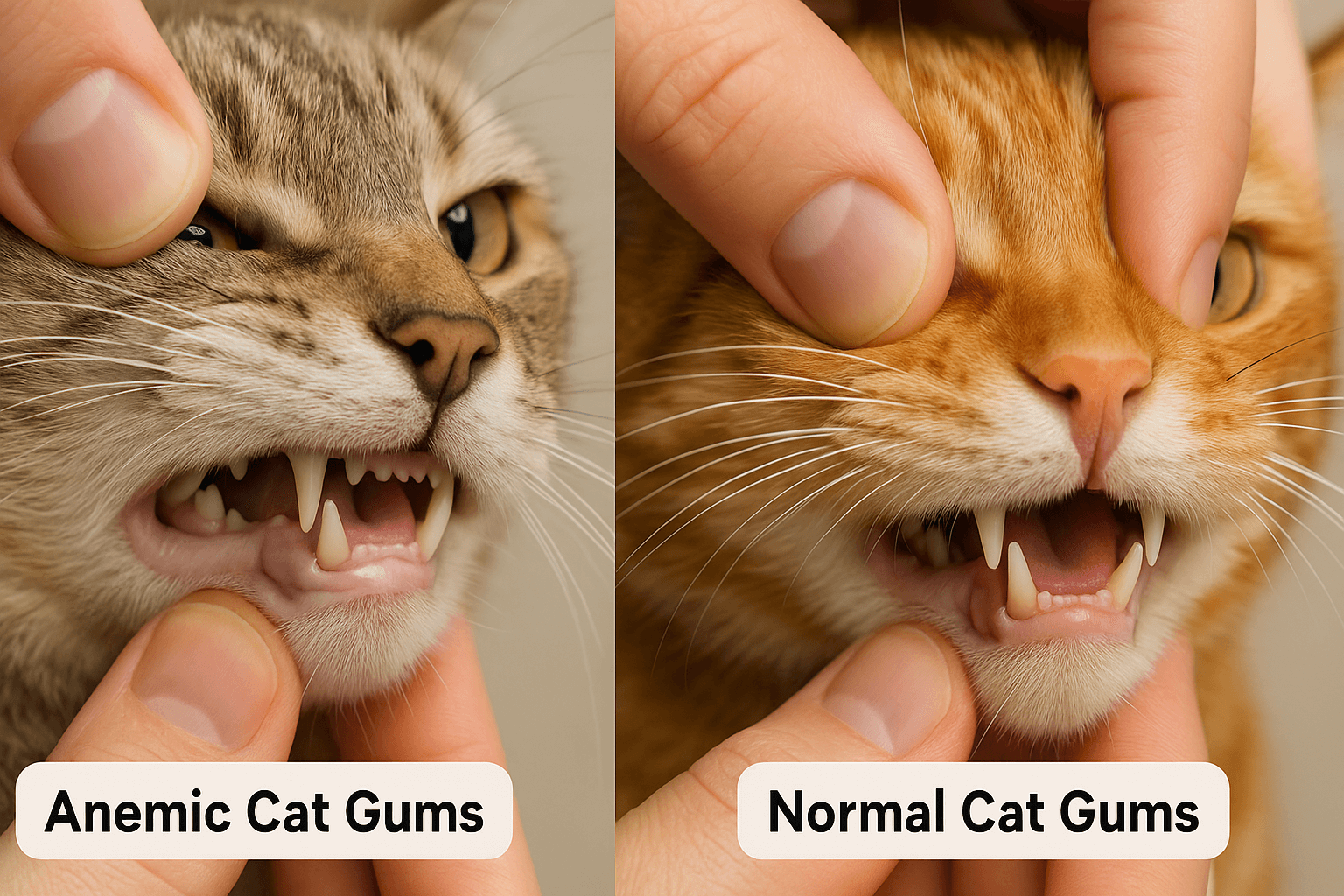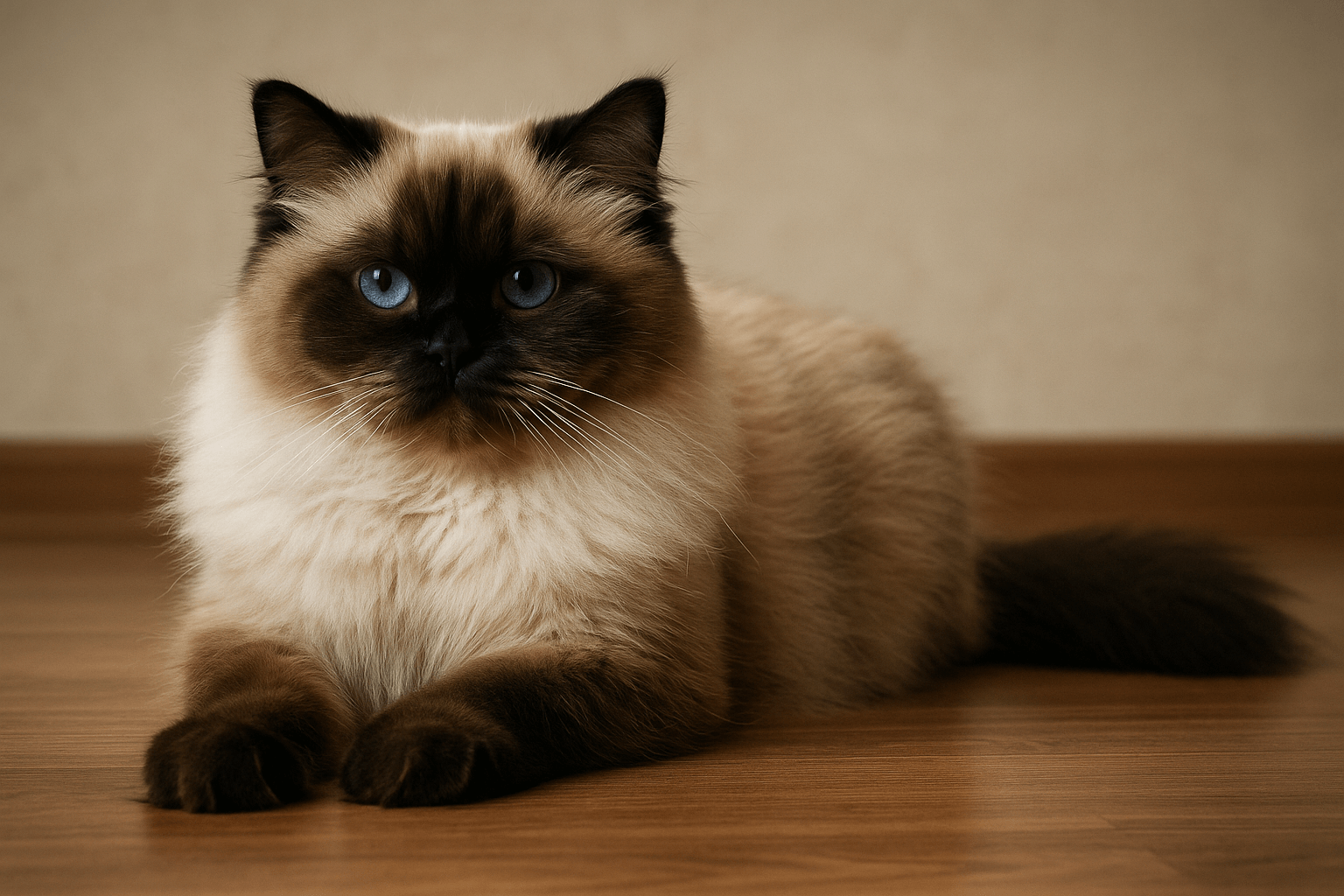Can Cats Eat Cabbage?
When it comes to feeding our feline friends, many pet owners wonder whether vegetables like cabbage are safe for cats. While cats are obligate carnivores, meaning their primary diet should consist of meat, they can occasionally enjoy small amounts of certain vegetables as treats. Cabbage, in particular, is a nutrient-rich vegetable that humans love—but is it safe for cats? In this blog post, we’ll explore the potential benefits and risks of feeding cabbage to your cat, how to prepare it safely, and what to watch out for. Whether you’re curious about expanding your cat’s diet or simply want to ensure their health, this guide will provide all the information you need.
Potential Benefits of Feeding Cabbage to Cats
Cabbage isn’t a staple food for cats, but when given in moderation, it can offer some surprising health benefits. Here’s why you might consider adding a small amount of cabbage to your cat’s diet.
Rich in Vitamins:
Cabbage contains vitamins like K and C, which support bone health and immune function in cats.High Fiber Content:
The fiber in cabbage can aid digestion and help prevent constipation, especially in cats prone to digestive issues.Low in Calories:
As a low-calorie vegetable, cabbage makes a healthy occasional treat for cats watching their weight.Antioxidant Properties:
Cabbage is packed with antioxidants, which may help reduce inflammation and support overall health.Hydration Boost:
With its high water content, cabbage can contribute to your cat’s daily hydration needs.
While these benefits make cabbage a nutritious option, it’s important to remember that it should only be given as an occasional treat—not a dietary staple.
Risks of Feeding Cabbage to Cats
Although cabbage has its benefits, there are also risks associated with feeding it to your cat. Understanding these potential downsides will help you make informed decisions about their diet.
Digestive Upset:
Some cats may experience gas, bloating, or diarrhea after eating cabbage due to its fiber content.Allergic Reactions:
Though rare, some cats may have sensitivities or allergies to certain vegetables, including cabbage.Choking Hazard:
Large pieces of raw cabbage can pose a choking risk, especially for smaller cats or those who gulp their food.Overfeeding Risks:
Feeding too much cabbage can upset your cat’s nutritional balance, as their bodies aren’t designed to process large amounts of plant matter.Pesticide Exposure:
Non-organic cabbage may contain harmful chemicals, so always wash it thoroughly or opt for organic options.
These risks highlight the importance of moderation and proper preparation when introducing cabbage to your cat’s diet.
Check this guide 👉Can Cats Eat Asparagus? Best 7 Expert Tips!
Check this guide 👉Can Cats Eat Pasta? Best 7 Expert Tips!
Check this guide 👉Can Cats Eat Olive Oil? Best 7 Expert Tips!
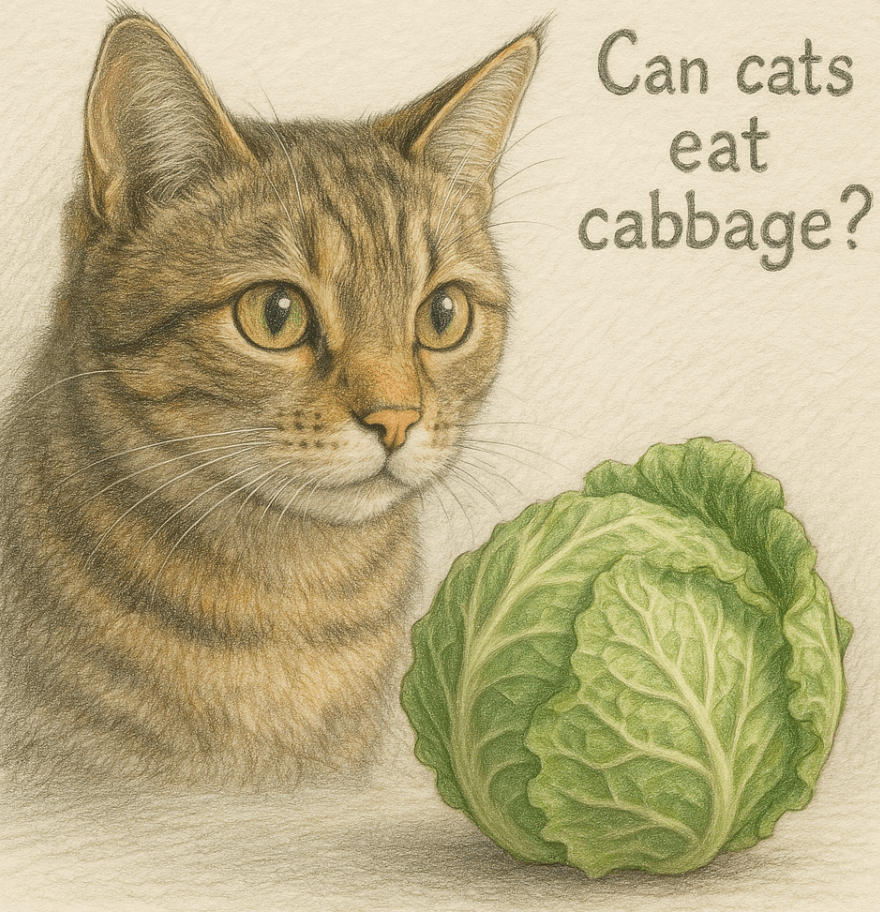
Safe Ways to Prepare Cabbage for Cats | Foods to Avoid Mixing with Cabbage |
|---|---|
Steamed or boiled (plain, no seasoning) | Onions or garlic |
Finely chopped or pureed | Spices or herbs |
Organic and thoroughly washed | Salt or butter |
Small, bite-sized portions | Dairy products like cheese or cream |
Raw (in very small amounts) | Processed or canned vegetables |
How to Safely Introduce Cabbage to Your Cat
If you decide to give your cat cabbage, it’s essential to introduce it gradually and monitor their reaction. Follow these steps to ensure a safe and positive experience.
Start with Small Portions:
Offer a tiny piece of cooked or finely chopped cabbage to see how your cat reacts before giving more.Choose Plain Preparation Methods:
Avoid seasoning, oils, or sauces, as these can upset your cat’s stomach or even be toxic.Observe for Allergic Reactions:
Watch for signs of itching, swelling, or gastrointestinal distress after feeding cabbage.Monitor Digestive Health:
Keep an eye on your cat’s stool consistency to ensure the cabbage isn’t causing diarrhea or constipation.Consult Your Veterinarian:
Always check with your vet before introducing new foods, especially if your cat has underlying health conditions.
By following these guidelines, you can minimize risks and determine whether cabbage suits your cat’s individual needs.
Signs Your Cat May Not Tolerate Cabbage
Not all cats will enjoy or tolerate cabbage, and some may have adverse reactions. Look out for these warning signs to act quickly if something goes wrong.
Vomiting or Diarrhea:
These symptoms indicate that your cat’s digestive system is struggling to process cabbage.Excessive Gas or Bloating:
Increased flatulence could signal that cabbage disagrees with your cat’s gut flora.Loss of Appetite:
If your cat refuses to eat after trying cabbage, it may not be a suitable food for them.Lethargy or Discomfort:
A sudden lack of energy or signs of pain might suggest an allergic reaction or intolerance.Skin Irritation or Itching:
Redness, scratching, or swelling could indicate an allergic response to cabbage.
Recognizing these signs early allows you to remove cabbage from their diet and seek veterinary advice if needed.
Common Mistakes When Feeding Cabbage to Cats
Avoiding common mistakes ensures your cat enjoys cabbage safely without compromising their health. Here are some pitfalls to watch out for.
Adding Seasonings or Spices:
Ingredients like salt, garlic, or onion powder can harm your cat’s digestive system and should never be used.Offering Large Pieces:
Big chunks of cabbage can be difficult for cats to chew and swallow, increasing the risk of choking.Feeding Too Frequently:
Overdoing cabbage disrupts your cat’s nutritional balance and may lead to digestive issues.Using Leftovers with Sauce:
Avoid giving cabbage coated in butter, oil, or creamy sauces, as these are unhealthy for cats.Ignoring Your Cat’s Preferences:
Just because cabbage is safe doesn’t mean every cat will enjoy it; respect their tastes and avoid forcing it.
Avoiding these mistakes ensures a safer and more enjoyable experience for your cat.
Alternatives to Cabbage for Cats
If cabbage doesn’t suit your cat, there are plenty of other vegetables and treats you can try instead. Here are some safe and nutritious alternatives.
Pumpkin:
Plain, canned pumpkin aids digestion and helps with hairball control, making it a favorite among cat owners.Carrots:
Cooked and finely chopped carrots are rich in beta-carotene and make a great occasional treat.Green Beans:
Low in calories and high in fiber, green beans are a healthy option for cats needing weight management.Zucchini:
This mild-flavored vegetable is easy to digest and can be served cooked or lightly steamed.Blueberries:
Packed with antioxidants, blueberries are a tasty and nutritious treat for cats who enjoy fruit.
These alternatives allow you to diversify your cat’s diet while keeping it safe and balanced.
Understanding Your Cat’s Dietary Needs
As obligate carnivores, cats have specific dietary requirements that must be met for optimal health. Understanding these needs helps you make better choices about treats like cabbage.
High Protein Requirement:
Cats need diets rich in animal-based proteins to thrive, so vegetables should complement—not replace—meat-based meals.Limited Ability to Process Plant Matter:
Their digestive systems aren’t designed to break down large amounts of fiber, so vegetables should always be given sparingly.Essential Nutrients from Meat:
Taurine, an amino acid found only in animal tissue, is crucial for heart and eye health and cannot be replaced by vegetables.Importance of Hydration:
Cats often struggle to stay hydrated, so adding moisture-rich foods like cooked cabbage or pumpkin can be beneficial.Individual Preferences Vary:
Each cat has unique tastes and tolerances, so what works for one may not work for another—always tailor their diet accordingly.
By respecting these principles, you can provide a diet that supports your cat’s health and happiness.
Frequently Asked Questions About Cats and Cabbage
Is cabbage safe for cats to eat?
Yes, in small amounts and properly prepared, cabbage is generally safe for most cats.
Can I feed my cat raw cabbage?
Raw cabbage can be given in very small amounts, but cooking it softens the fibers and makes it easier to digest.
How often can I give my cat cabbage?
Limit cabbage to occasional treats—no more than once or twice a week—and always in moderation.
What should I do if my cat eats too much cabbage?
Monitor them closely for digestive issues and consult your vet if symptoms persist or worsen.
Are there other vegetables cats can eat?
Yes, cats can enjoy small portions of pumpkin, carrots, green beans, and zucchini, provided they’re prepared safely.
Feeding Cabbage to Your Cat: A Balanced Perspective
While cabbage isn’t a necessary part of a cat’s diet, it can be a healthy occasional treat when prepared and offered correctly. Its nutritional benefits make it a worthwhile addition for some cats, but its potential risks mean it should always be given in moderation. By understanding your cat’s unique preferences and tolerances, you can decide whether cabbage is a suitable snack for them. Remember, your veterinarian is your best resource for dietary advice tailored to your cat’s specific needs. With careful consideration, you can ensure your feline friend enjoys a balanced and varied diet that keeps them happy and healthy.
Giardia in Cats: Best 7 Expert Tips! Discover expert advice on identifying, treating, and preventing giardia in cats to ensure your feline stays happy and healthy.
Cat Hyperventilating: Best 7 Expert Tips! Discover signs, causes, and solutions for cat hyperventilation. Learn how to calm your cat and when to seek veterinary care for their breathing issues.
Anemic Cat Gums vs Normal: Best 7 Expert Tips! Learn to spot signs of anemia in cats, understand gum health, and ensure your feline stays happy and healthy with expert advice.
Himalayan Cat Size: Best 7 Expert Tips! Discover expert advice on Himalayan cat size, growth factors, care tips, and how to ensure your feline stays healthy and happy.

